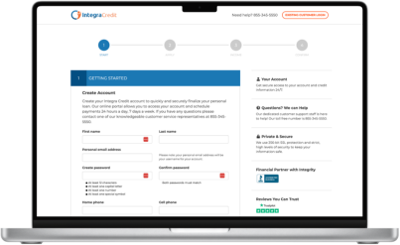Budgeting might seem intimidating, especially if you feel that you’re living paycheck to paycheck. You must know how much to spend on specific household needs and how much to save. By committing to saving money and organizing your income and expenses, you become prepared to put away those funds that might be beneficial one day.
The easiest way to start saving is to consider a monthly budget dividing your after-tax income by specific percentages. The 50/30/20 rule is one of the most common percentage-based budgets, dividing your needs, wants, and savings to create a healthy mix.
The Importance of Savings
Life happens, and part of our lives includes unexpected expenses and emergencies. Additionally, we all want to retire at some point. Saving is an essential consideration for knowing that we can pay for a car repair, take a much-needed vacation, or just realize the satisfaction of having funds when needed.
Moreover, saving not only provides immediate financial security but also offers the opportunity to earn interest on our savings accounts, watching our money grow steadily over time and enhancing our financial well-being. So, whether it’s for short-term needs or long-term goals, saving is a wise choice that allows us to navigate life’s uncertainties while also building a brighter financial future.
Why Should I Have a Budget?
Budgets are essential to managing our lives and building wealth. Calculate what is spent on groceries, entertainment, utilities, transportation, and all other monthly expenditures. Utilizing free tools like Google Sheets, you can start budgeting by listing your monthly income, then categorize and track your expenses, ensuring they align with your financial goals and making adjustments as needed.
Now you have a basis from which to hold yourself monthly. You can easily track your expenses and take note of any areas you are overspending.
Your budget is the tool you use every month to see how you’re doing instead of spending unthinkingly.
One thing to consider is allocating a percentage or all of your paycheck to a savings account, which can be easily accessed by scheduling regular transfers from your savings to your checking account for ease of spending. While your money rests in that savings account, you can watch your money grow over time, providing a safety net for expenses like car repairs, vacations, or future investments.
What is the 50/30/20 Rule?
Budgeting might be overwhelming if you don’t know what should be allocated where after you’ve organized your income and expenses. Difficult decisions have to be made about how to allocate your income for spending purposes, but how much should you be spending and how much should you be saving?
Keep it simple with a percentage-based budget and divide your after-tax income into categories of how it is spent. The 50/30/20 rule is one of the most common types of budgets because it is easy to calculate.
Divide your income into categories. 50% is spent on your needs, 30% on your wants, and 20% on savings.
Let’s break down what needs and wants encompass.
50% for Necessities
We all need to eat, have a roof over our heads, turn on the lights, and go to the doctor. These needs and more are essential to our lives and considered necessities. The goal is to keep these necessities at most 50% of our income. If your car or student loans are paid off, those funds may be moved to wants or savings.
30% for Wants
30% of your income should cover the things you want and that make your life more meaningful, such as a dinner with friends or a weekend trip. At the same time, this category of spending most often derails plans for saving money. It’s very easy to spend on fun. Consider alternatives just as rewarding but not as expensive, like having friends over for dinner instead of the expensive restaurant.
If you’re not watching all those streaming tv subscriptions, consider cutting back. Upgrading things might be unnecessary, and some items might be better rented than bought.
20% for Savings
The 20% not spent on needs or wants should go into a savings account.
With greater awareness of how we spend come opportunities to reduce expenses and save. That savings account might someday turn into a down payment for a new car, a vacation, or a backup for emergencies.
Your funds don’t need to go into a savings account only. Contributing to an investment account or a retirement account is an excellent option. Another consideration is having a secondary savings account with part of your 20% dedicated to emergencies and another account left alone to save for more extensive needs.
Some extra steps for savings are mobile apps that round up your transactions to the nearest dollar and then transfer the excess into your savings account. Some people set up an account with another bank and have an amount moved to the account regularly. Even $5 a week adds up when you leave that account alone.
Other Popular Budgeting Methods
The 50/30/20 budget isn’t the only budgeting and saving method; others might work better for you. One of these other methods might be better for you based on your income and the cost of living or if you have an irregular income.
Pay-Yourself-First Budget
With the pay-yourself-first budget, money is allocated first toward savings or other financial goals before living expenses and debt. Using the pay-yourself-first method, financial goals are prioritized.
Zero-Sum Budget
With the zero-sum budget, you calculate your entire month’s income until you have a zero balance. This budgeting method is about mindfulness and knowing where your money is going. You have to dig into details, which can be time-consuming. If you overspend in one area, you must allocate funds from another.
‘No’ Budget
As the name suggests, this budgeting method is about saying ‘no’ when potentially spending money you don’t have. No formal budgeting is required, but you need to keep an eye on your balances, know when recurring bills will hit your checking account, and put away savings or extra debt payments with automatic transfers.
It may sound easy, but saying ‘no’ is often challenging. If you have spending discipline, this method might work well for you.
Envelope Budget
Envelope budgeting involves putting cash into envelopes for different budgeting categories and using the money within each for those particular expenses only.
However You Do It, Budgeting Is Important
Regardless of the method you choose to use, budgeting is essential to financial health. Knowing where funds are going makes it easier to cut expenses and hold yourself accountable. By allocating funds to a savings account, you might be pleasantly surprised someday to realize you can afford that vacation or cover that emergency expense.
Apply in minutes, quickly & securely
- Complete an online application
- Receive a decision quickly
- Review and sign the agreement
- Get cash directly into your bank account





